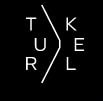My father was an innovative and very successful real estate developer. The Miami Herald called him “The Father of Florida Condominiums” because he built the first residential condo in the United States and the first office condo in the world. As a kid, I used to walk from my elementary school to his construction projects to drop off my books before spending the afternoon in Flamingo Park. Sometimes my dad would walk me through the job site and show me where the elevators were going, how the stairs would be installed, and where the apartments were.
 He'd also tell me about the construction business. How you made your money not when you sold your building but when you bought the property. How the key to building a great building profitably was to be willing to compromise on everything except design and architecture. And why he always wanted to sell his condo apartments as early as possible in the project's lifespan.
He'd also tell me about the construction business. How you made your money not when you sold your building but when you bought the property. How the key to building a great building profitably was to be willing to compromise on everything except design and architecture. And why he always wanted to sell his condo apartments as early as possible in the project's lifespan.
Even as a kid, I thought I understood that the reason for selling the project early was to get as much money as you could as quickly as possible. But my dad had a different rationale. Quite simply, he said he always preferred to “sell the dream.”
As my dad explained it, his best opportunity to sell an apartment for the highest price was to walk his potential buyer through a construction site and show them where they'd live, how close they'd be to shopping, the tennis courts, and the beach. Where they'd park and where their grandchildren would sleep when they stayed over.
But once the apartment was complete, the conversations would become more prosaic. One couple wanted harvest gold shag carpeting. The next buyer hated gold. One couple wanted a tile kitchen. The next wanted butcher block. Some people wanted bathtubs. Some people wanted showers because they couldn't step over the bathtub rim.
So what's an easier sell? Painting the picture of where they're going to tuck in their adorable grandchildren or debating the value proposition of Corian or Formica countertops? When put in those simple terms, the advantages become clear. Regardless of whom the customer was and what they wanted, it was always easier to “sell the dream.” Because the reality never quite measured up to their fantasies.
Now think about your brand strategy. Are you promoting the intellectual, metrics-based advantages of your brand or have you figured out how to sell the dream?
Want some examples to figure out where you stand? Microsoft sells computing; Apple sells the dream. Checkers sells fast food; McDonald's sells the dream. Sears sells inexpensive clothing and household items; Target sells the dream.
Selling the dream means you can concentrate your brand messaging on the things that get people excited. It means you can build a resilient message that will survive trends and fads. And it usually means you can charge—and get—a higher price for your products and services. Just like Apple, McDonald's, Target… and my father.
Thanks, Dad.
